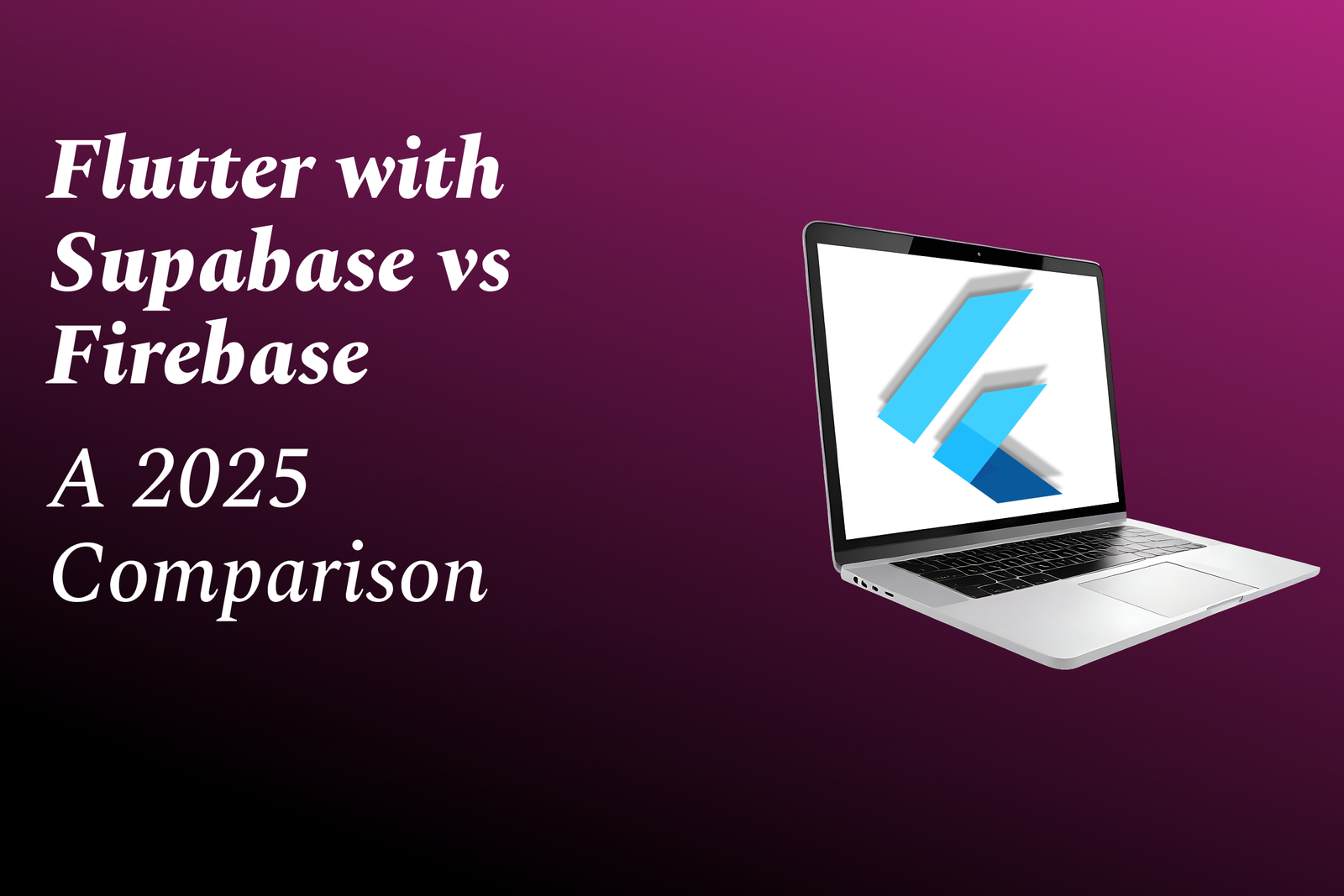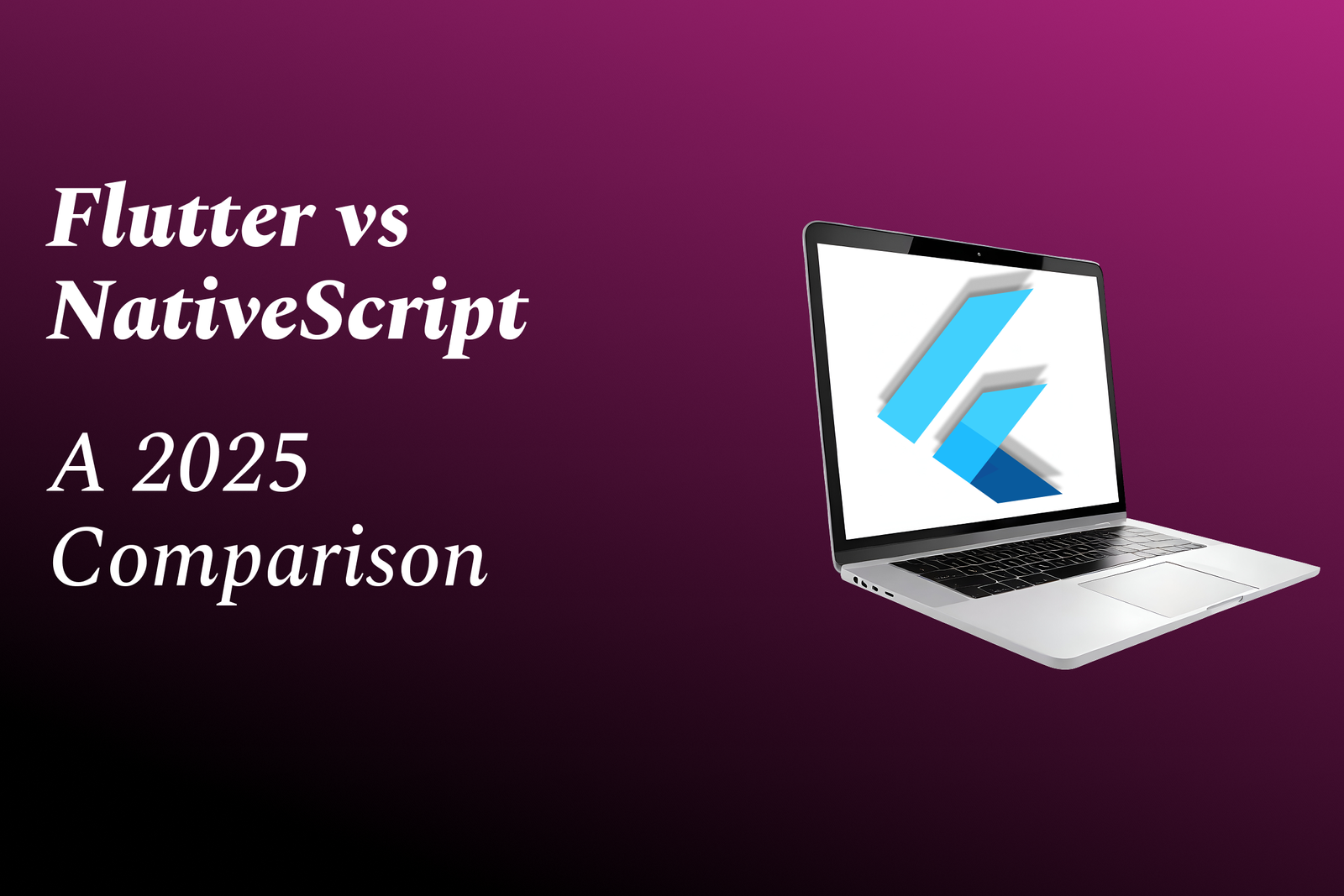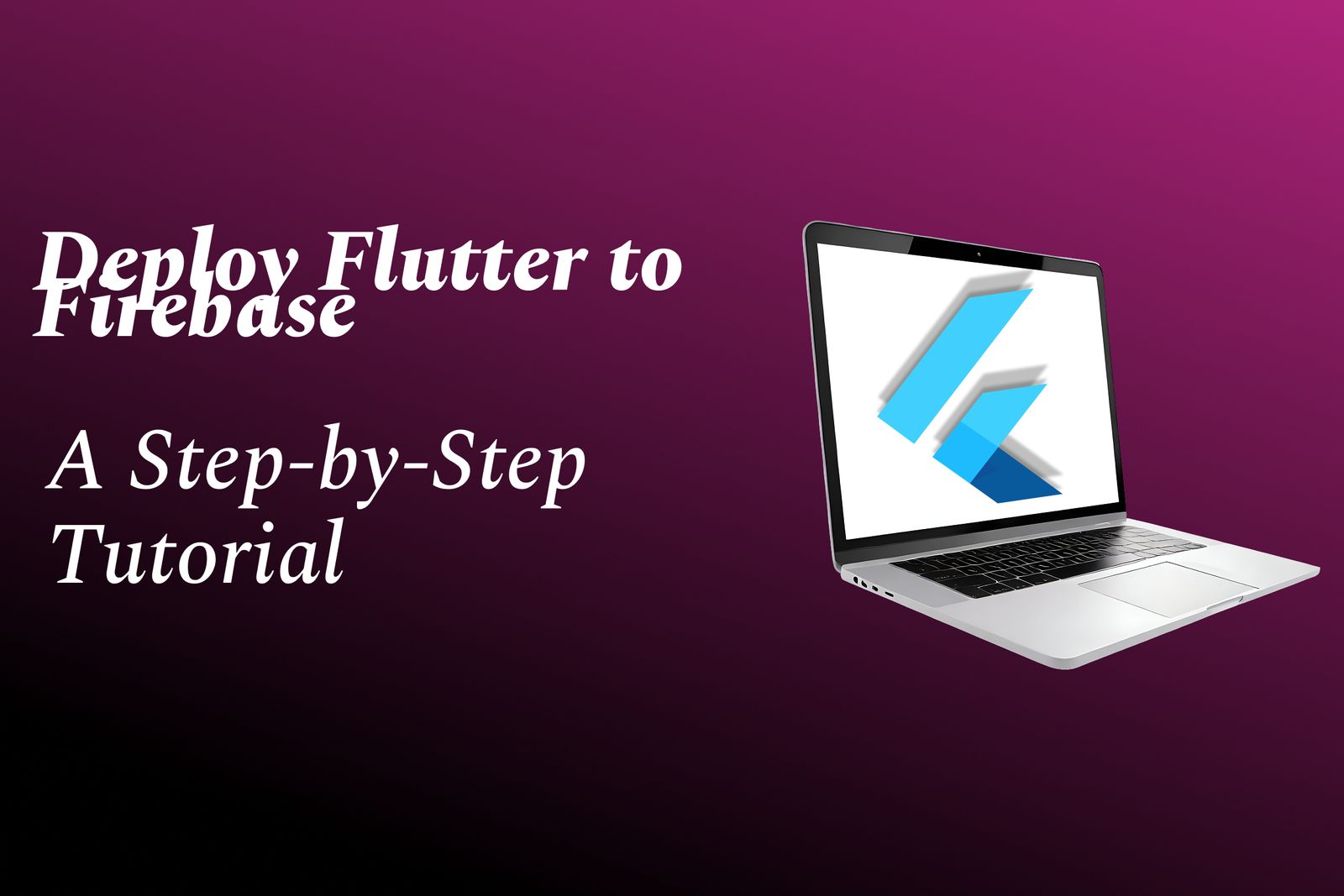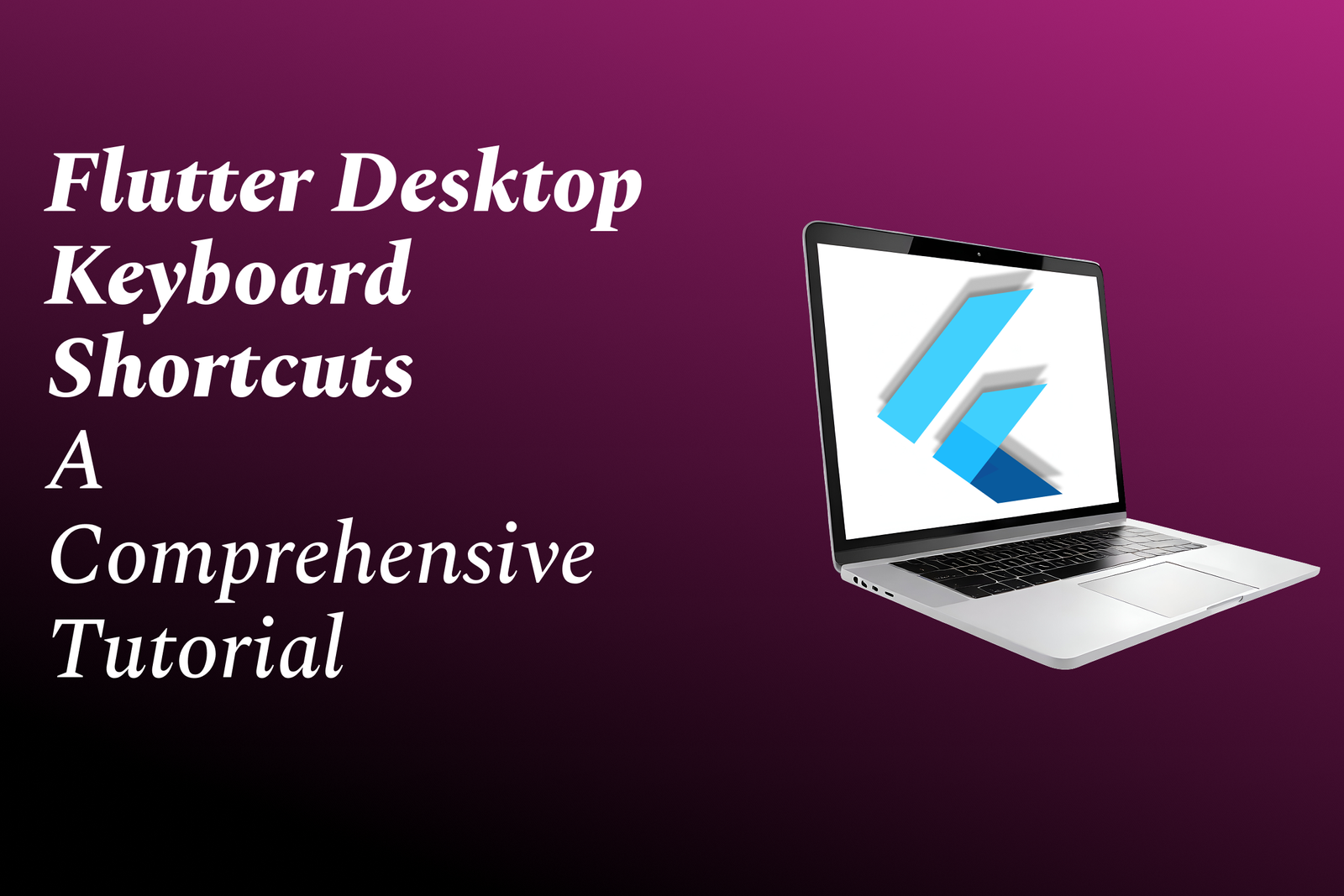Responsive Flutter Layouts For All Screen Sizes
Responsive Flutter layouts enable apps to adapt fluidly to phones, tablets, foldables and desktops by relying on constraints and relative sizing (MediaQuery, LayoutBuilder, Flexible/Expanded, FractionallySizedBox), adaptive breakpoints, orientation-aware logic and scalable assets/typography rather than fixed pixel values—resulting in consistent UI, better accessibility and performance across screen sizes and device types, which is essential for building production-ready, real-time projects.
Responsive Flutter Layouts For All Screen Sizes
Responsive Flutter layouts let apps adapt gracefully to phones, tablets, foldables and desktops by using relative sizing, breakpoints and Flutter's layout tools (MediaQuery, LayoutBuilder, Flexible, etc.), ensuring consistent UI and usability across screen sizes and orientations. This approach improves accessibility, performance and maintainability, reduces device-specific bugs, and speeds development—critical for building production-ready, real-time projects that you’ll master through JustAcademy’s certifications.
To Download Our Brochure: **https://www.justacademy.co/download-brochure-for-free
**
Message us for more information: **https://api.whatsapp.com/send?phone=919987184296
**
Responsive Flutter layouts let apps adapt gracefully to phones, tablets, foldables and desktops by using relative sizing, breakpoints and Flutter's layout tools (MediaQuery, LayoutBuilder, Flexible, etc.), ensuring consistent UI and usability across screen sizes and orientations. This approach improves accessibility, performance and maintainability, reduces device specific bugs, and speeds development—critical for building production ready, real time projects that you’ll master through JustAcademy’s certifications.
Course Overview
Responsive Flutter Layouts for All Screen Sizes at JustAcademy teaches building adaptive UIs using MediaQuery, LayoutBuilder, Flex/Flexible/Expanded, OrientationBuilder, breakpoints and adaptive widgets; includes hands-on projects for phones, tablets, foldables and web to create production-ready, accessible layouts.
Course Description
Responsive Flutter Layouts for All Screen Sizes from JustAcademy is a hands-on certification course that teaches building adaptive, accessible, and performant UIs across phones, tablets, foldables, and web. You’ll master MediaQuery, LayoutBuilder, Flex/Flexible/Expanded, OrientationBuilder, responsive breakpoints, and adaptive widgets through real-time projects and practical best practices to deliver production-ready apps.
Key Features
1 - Comprehensive Tool Coverage: Provides hands-on training with a range of industry-standard testing tools, including Selenium, JIRA, LoadRunner, and TestRail.
2) Practical Exercises: Features real-world exercises and case studies to apply tools in various testing scenarios.
3) Interactive Learning: Includes interactive sessions with industry experts for personalized feedback and guidance.
4) Detailed Tutorials: Offers extensive tutorials and documentation on tool functionalities and best practices.
5) Advanced Techniques: Covers both fundamental and advanced techniques for using testing tools effectively.
6) Data Visualization: Integrates tools for visualizing test metrics and results, enhancing data interpretation and decision-making.
7) Tool Integration: Teaches how to integrate testing tools into the software development lifecycle for streamlined workflows.
8) Project-Based Learning: Focuses on project-based learning to build practical skills and create a portfolio of completed tasks.
9) Career Support: Provides resources and support for applying learned skills to real-world job scenarios, including resume building and interview preparation.
10) Up-to-Date Content: Ensures that course materials reflect the latest industry standards and tool updates.
Benefits of taking our course
Functional Tools
1 - Flutter SDK and Dart language: The course trains students to install and configure the Flutter SDK and Dart toolchain, covering channel management and SDK upgrades so projects stay compatible across platforms. Hands on labs teach building responsive widgets using Dart language features like extension methods, null safety and async patterns to handle layout logic. Students learn to configure Flutter for web, Android and iOS builds so layouts are tested across form factors. Emphasis on practical exercises ensures learners can scaffold responsive apps from scratch and maintain performance. JustAcademy provides guided assignments and checklists to make SDK and Dart mastery job ready.
2) Visual Studio Code and Android Studio: Training covers both VS Code and Android Studio IDEs, comparing workflow differences and keyboard shortcuts for efficient layout design and debugging. Students practice configuring plugins, themes, emulators and device connections to streamline responsive testing. Labs show how to use IDE refactorings, code snippets and Flutter specific tools like hot reload/hot restart to iterate on layouts quickly. Instruction includes project templates and workspace settings recommended by JustAcademy to standardize classroom projects. Exercises focus on optimizing developer ergonomics for faster responsive UI delivery.
3) Flutter DevTools and Layout Inspector: The curriculum teaches Flutter DevTools usage for performance profiling, widget tree inspection and memory analysis specifically to debug layout issues. Students learn to use the Layout Inspector to visualize padding, alignments and rendering constraints across screen sizes. Practical sessions demonstrate diagnosing overflow, repaint boundaries and layout thrashing to create smoother responsive experiences. Real time debugging labs train learners to correlate visual issues with widget code, reducing time to fix in projects. Guidance includes best practices for interpreting DevTools metrics in production tuning.
4) Device emulators, simulators and physical testing devices: Training emphasizes testing on a wide matrix of emulators, simulators and real devices to validate responsive behavior across resolutions and aspect ratios. Labs cover setting up Android Virtual Devices, iOS Simulators and web responsive views as well as connecting physical phones for accurate touch and sensor testing. Students run test scenarios across foldables, tablets and desktop browsers to learn adaptive layout patterns. JustAcademy provides device testing checklists and assignments that require cross device verification for certification. This ensures graduates can confidently deliver layouts that work on actual hardware.
5) Responsive packages (flutter_screenutil, responsive_framework, layout_grid): The course introduces popular packages that simplify scaling, breakpoints and grid systems, teaching when to adopt each tool versus native constraints. Students implement hands on projects using flutter_screenutil for density aware sizing, responsive_framework for breakpoint handling and layout_grid for complex multi column grids. Exercises compare package driven approaches against manual MediaQuery/Constraints strategies so learners can make informed architecture choices. Best practice modules cover dependency management, version pinning and package performance implications. Assignments require building a complete responsive page using at least two packages to demonstrate practical trade offs.
6) MediaQuery, LayoutBuilder and OrientationBuilder (framework tools): Instruction dives into Flutter’s built in responsiveness primitives so students understand adaptive layout fundamentals without relying solely on third party packages. Labs show practical usage of MediaQuery for screen metrics, LayoutBuilder for parent constraints and OrientationBuilder for orientation specific adjustments. Students build reusable adaptive widgets that query constraints and react to size classes, fostering component level responsiveness. Training emphasizes testable patterns and separation of concerns so responsive logic stays maintainable. Projects require creating widgets that gracefully adapt between portrait, landscape and multi window modes.
7) Figma and design handoff workflows: The program covers using Figma for creating responsive mockups, components and design tokens, and teaches handoff best practices for Flutter developers. Students learn to inspect designs, extract spacing/typography scales and export assets in proper formats for Flutter integration. Workshops demonstrate converting Figma responsive constraints into Flutter layout code and maintaining parity between design and implementation. JustAcademy includes collaborative exercises with designers to simulate real world handoffs and feedback cycles. Emphasis on design tokens helps students implement consistent themes across screen sizes.
8) Git, GitHub and collaborative workflows: Training includes version control fundamentals, branching strategies and pull request etiquette tailored to UI/layout development and review. Students practice committing responsive changes, managing merge conflicts from layout work and writing clear PR descriptions for visual updates. Labs include code review simulations where learners critique responsive implementations and propose improvements. Integration with CI checks for formatting and widget tests is taught to keep layout regressions minimal. Certification projects are submitted via GitHub repositories following the taught workflows.
9) Device Preview and responsive testing packages: The course introduces device_preview and similar tools to emulate multiple device frames, locales and device orientations inside a single run. Students use these tools to rapidly validate how a layout behaves across a matrix of screen sizes without launching many emulators. Exercises show automating screenshots across sizes to create visual regression test baselines. Training covers customizing device lists and using preview modes for accessibility checks like font scaling. Assignments require producing a device matrix report demonstrating responsive correctness.
10) Flutter’s testing libraries (flutter_test, golden tests, integration_test): Instruction includes writing unit, widget and integration tests specifically targeted at layout correctness and regressions. Students learn to author golden tests (pixel comparisons) for critical screens and to update baselines responsibly as designs evolve. Integration tests validate navigation and responsive flows across simulated devices and window sizes to catch runtime layout issues. Labs teach CI integration for running layout tests on pull requests to prevent regressions before merging. JustAcademy provides sample test suites and grading rubrics for certification projects.
11 - Accessibility and screen reader testing tools: The curriculum teaches tools and techniques to ensure responsive layouts remain accessible, including semantics, focus order and scalable typography. Students use accessibility inspectors and screen reader emulators to test how layouts adapt when fonts are enlarged or contrast modes are applied. Practical exercises require implementing semantic labels, tappable area minimums and responsive focus management for keyboard and assistive technologies. Training emphasizes that accessibility and responsiveness are complementary and must be validated together. Projects include accessibility checklists as part of final grading.
12) Image optimization and asset tools (flutter_svg, cached_network_image, image_compression): Training covers optimizing visual assets for responsive UIs to minimize bundle size and network impact while supporting multiple densities. Students learn to use tools and packages to serve SVGs, lazy load images and provide density specific image sets for sharp rendering across devices. Labs include building responsive image widgets that swap resolutions based on device pixel ratio and layout constraints. Lessons cover runtime caching strategies and progressive loading patterns for better perceived performance. Assignments require demonstrating optimized asset delivery across small and large form factors.
13) CI/CD and deployment tools (GitHub Actions, Codemagic): The course explains automating builds and responsive QA across platforms using CI/CD pipelines, enabling repeatable validation of layout changes. Students set up pipelines that run widget tests, golden tests and device matrix screenshots on PRs, ensuring layout quality gates before merge. Practical modules show building web, Android and iOS artifacts and deploying preview builds for stakeholder review. JustAcademy provides starter pipeline templates and walkthroughs for common pitfalls in cross platform deployment. Final projects include configuring a pipeline that validates responsive behavior automatically.
14) Performance profiling tools (Dart DevTools CPU/Memory, Observatory): Training teaches profiling techniques to measure the cost of responsive widgets, identify rebuild hotspots and optimize rendering. Students practice using DevTools’ CPU and timeline views to trace frame drops caused by expensive layout passes or heavy rebuilds. Labs include rewriting inefficient layouts into constraint aware alternatives and measuring improvements. Instruction covers caching, const constructors and effective use of RepaintBoundary to reduce jank on lower end devices. Assignments expect demonstrable before/after performance improvements with documented metrics.
15) Storybook like tooling and component documentation (widgetbook, dashbook): The course covers component catalogs that let students document responsive variants and states in isolation. Students create story driven galleries for components at different breakpoints so designers and developers can review behavior independently. Labs show integrating stories into CI for visual review and using them as living documentation for teams. Training emphasizes building reusable, well documented design systems that simplify responsive implementation in larger apps. Projects include a component library with responsive stories as part of the portfolio.
16) Platform specific debugging tools (Chrome DevTools for web, Xcode Instruments, Android Profiler): Instruction includes using platform native tools to debug web and native platform layout and performance peculiarities. Students learn to inspect DOM/CSS when targeting Flutter web and use Instruments/Android Profiler for native memory and rendering investigations on mobile. Hands on exercises demonstrate resolving platform specific issues like keyboard insets, safe area handling and input method behaviors. Training provides checklists for platform parity testing across iOS, Android and web. Certification tasks require cross platform issue resolution documented in the project report.
17) Localization and internationalization tools (intl package, l10n workflows): The curriculum teaches using intl, ARB files and Flutter’s localization tooling to make responsive layouts adapt to language driven size changes. Students practice handling long translations, bidirectional text and locale specific formatting that can affect layout and overflow. Labs include dynamic font scaling and spacing adjustments for languages with longer strings, ensuring responsiveness across locales. Best practices cover automated checks and pseudo localization to catch layout breakages early. Projects must include at least two locales demonstrating robust responsive adjustments.
18) Analytics and crash monitoring tools (Firebase Crashlytics, Sentry): The course explains integrating observability tools to monitor how responsive layouts perform in the wild and to gather crash data tied to specific device form factors. Students learn setting up analytics events to track layout variant usage and gather telemetry on device sizes most used by real users. Assignments include instrumenting a demo app to log layout metrics and creating dashboards that inform prioritization of responsive fixes. Training emphasizes privacy conscious telemetry practices and actionable monitoring. Final assessments review the candidate’s instrumentation and insights.
19) Design tokens and theming tools (flutter_theme, design token workflows): Training covers creating centralized theme systems and design tokens so responsive rules like spacing scales and breakpoints propagate consistently. Students implement token driven themes that switch values based on size classes to avoid scattered magic numbers in layouts. Labs teach how to extract tokens from Figma and convert them to Dart constants or configuration files consumed by the app. Exercises include building theme toggles and responsive typography scales that adapt with minimal code changes. Projects require a token driven approach for maintainable responsive design.
20) Community resources and package registries (pub.dev, GitHub examples): The course orients students to the ecosystem of community packages, example repositories and canonical patterns for responsive Flutter layouts. Instruction shows how to evaluate packages for maintenance, performance and compatibility, and how to adapt examples into production code responsibly. Students complete curated reading lists, open source labs and contribution tasks to learn real world troubleshooting and pattern discovery. JustAcademy encourages students to build a public portfolio repository demonstrating learned tools and patterns as part of certification submission.
21 - State management patterns (Provider, Riverpod, Bloc): Training compares state management solutions and how they affect responsive UIs (e.g., rebuilding scopes, selector patterns). Labs require implementing responsive screens with at least two state patterns and measuring rebuild scopes to minimize unnecessary layout passes.
22) Adaptive navigation and responsive routing: Course covers navigation patterns that adapt to screen size — bottom nav, rail, side drawer, master detail and nested navigators. Projects include building an app that switches navigation paradigms automatically and preserves state across layout changes.
23) Split screen, multi window and desktop adaptations: Students learn handling multi window, drag to split and resizable desktop windows, including window metrics APIs and layout resilience strategies. Assignments require the app to maintain functionality and layout integrity when resized or used in multi window modes.
24) Foldable and hinge aware layouts: Module explains foldable device APIs, hinge detection and strategies to avoid placing critical UI across physical hinges. Labs include simulating hinge zones and building adaptive content flows for single and dual screen devices.
25) Platform channels, plugins and native UI considerations: Training teaches when to use platform channels or platform specific plugins for UI/features that affect layout (keyboard management, system UI overlays). Students implement a native aware responsive behavior and document cross platform differences resolved in their project.
26) Advanced animations and motion design (Implicit + Explicit): Curriculum covers responsive aware animations that adapt duration, curves and interpolation based on device performance and size. Exercises include creating adaptive animated transitions that remain smooth on low powered devices.
27) Custom painting, shaders and canvas optimizations: Students learn when to use CustomPainter and fragment shaders for responsive decorative UI, and how to keep such renders performant across densities. Labs require implementing a scalable shader/decor that looks crisp at all sizes with measured frame rates.
28) Security, privacy and data handling for responsive features: Course covers privacy impacts of responsive telemetry (e.g., device metrics) and secure handling of images/assets across networks. Assignments include implementing privacy preserving telemetry and secure caching for responsive assets.
29) Offline first and progressive loading strategies: Training teaches progressive enhancement of layouts when network is slow or offline, including skeletons, lazy loading and prioritized resource loading. Projects must demonstrate graceful degradation of responsive UI under throttled network conditions.
30) Feature flags and remote configuration: Students learn using feature flags and remote config to roll out responsive variants safely and A/B test layouts. Labs set up flag driven layout toggles and capture metrics to evaluate performance and engagement.
31 - Dart isolates and background processing for layout tasks: Module explains moving heavy computations (image transforms, layout calculations) off the UI thread using isolates to avoid jank. Exercises involve implementing isolate based processing for responsive image resizing.
32) Memory leak detection and long running UI stability: Training covers detecting and fixing memory leaks from retained widgets, controllers and streams that degrade responsive behavior over time. Students perform leak analysis and produce remediation reports for their projects.
33) Runtime theme switching and dark mode responsiveness: Course teaches responsive theming that adapts typography, spacing and assets between light/dark and high contrast modes. Labs require implementing runtime theme toggles and validating layout integrity across modes.
34) UX writing, microcopy and responsive content strategies: Students learn writing flexible microcopy and truncation strategies, tooltip behavior and contextual affordances that scale with space. Assignments include building content aware widgets that adapt copy and CTAs by available space.
35) Analytics driven responsive prioritization: Module shows how to use analytics to prioritize which breakpoints and devices receive optimization investment. Projects include dashboards that correlate device segments with layout issues and propose remediation plans.
36) A/B testing and experimentation frameworks: Training covers designing and running experiments for alternative responsive layouts and measuring impact on task completion and retention. Students implement experiment toggles and analyze results to choose a winner.
37) Progressive Web App specifics and responsive web patterns: Course explains PWA considerations like layout responsiveness for various browsers, service workers, and offline caching for web delivered Flutter apps. Labs deploy a responsive PWA and validate cross browser behaviors.
38) Mock servers, API stubbing and contract driven responsive testing: Students use mock servers and contract testing to simulate content variations (long text, different image sizes) that affect layout. Assignments include creating test fixtures that exercise edge case content scenarios.
39) Code architecture and maintainability (modularization, feature folders): Training emphasizes structuring responsive code into reusable modules, feature driven folders and component boundaries to ease scaling. Projects are graded on architecture, reuse and how easy it is to add new breakpoints.
40) Open source contribution and portfolio readiness: Course guides learners to publish libraries, sample apps or responsive component kits publicly, including README, demo and usage docs. Certification requires at least one public artifact (package or app) demonstrating an advanced responsive pattern learned in the program.
If you want additional points focused on a particular area (web, foldables, testing or performance), indicate which area to expand.
Browse our course links : https://www.justacademy.in/all-courses
To Join our FREE DEMO Session: https://www.justacademy.in/register-for-course-demo
This information is sourced from JustAcademy
Contact Info:
Roshan Chaturvedi
Message us on Whatsapp: https://api.whatsapp.com/send?phone=919987184296
**Email id: mailto:info@justacademy.co
**
https://www.justacademy.co/blog-detail/native-to-flutter-migration:-a-strategic-guide
https://www.justacademy.co/blog-detail/flutter-flight-booking-app-ui:-a-tutorial
https://www.justacademy.co/blog-detail/flutter-test-environments:-a-setup-guide
https://www.justacademy.co/blog-detail/flutter-fintech-security:-a-best-practices-guide
https://www.justacademy.co/blog-detail/flutter-in-app-purchases-with-revenuecat
Responsive Flutter Layouts: Adaptive UI Techniques for Mobile, Tablet & Desktop — Complete Guide & Examples
Responsive Flutter Layouts: Adaptive UI Techniques & Best Practices for Mobile, Tablet & Desktop (Complete Tutorial & Examples)
Responsive Flutter Layouts 2025 — Complete Guide to Adaptive UI Patterns, Best Practices & Real-World Examples for Mobile, Tablet & Desktop
Responsive Flutter Layouts: Ultimate Guide to Adaptive UI Patterns, Best Practices & Real-World Examples for Mobile, Tablet & Desktop











